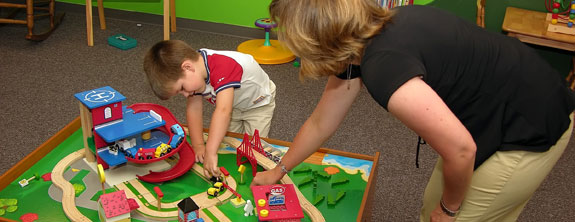
This guest post comes from Stephanie Breedlove, the VP of Care.com Homepay.
Finding a qualified, trustworthy caregiver is the most important decision you have to make when hiring someone to watch your kids. But a close second is making sure all tax and payroll requirements are followed so you’re free from financial and legal risk.
While many families believe the household employer tax process is overly expensive, the truth is that tax breaks can significantly decrease your tax liability. As long as the caregiver, babysitter, nanny, etc. is paid “on the books,” almost all families will be eligible for the Tax Credit for Child or Dependent Care.
Qualifications for the Tax Credit
Let’s start with the good news.
Families have no income restrictions when it comes to claiming the Tax Credit for Child or Dependent Care. As long as you meet the following requirements, you can to take advantage of the tax credit:
- The care must be for a child under the age of 13;
- You must need child care because both spouses work, are looking for work or are full-time students;
- You must have “qualifying” child or dependent care-related expenses.
The only catch with the third requirement is that the child care expenses must be for the well-being and protection of the child. A few examples of qualifying expenses are:
- The caregiver/nanny/babysitter’s wages
- Fees paid to a placement agency to match the caregiver with the family
- The family’s employer taxes paid on top of the caregiver’s wages
- Dues for enrolling the child in a day care facility
- Tuition for a day camp (overnight camps excluded).
How to Claim the Credit and What You Can Expect to Save
File IRS Form 2441 with your personal federal income tax return in order to claim the Tax Credit for Child and Dependent Care. The form asks for your care-related expenses for the calendar year and then calculates your savings based on a percentage determined by your income level. While the credit can be as much as 35%, most families will receive a 20% tax savings.
You’re limited on how much in child care expenses you can claim, based on how many kids you have. The expense limit is $3,000 for one child or $6,000 for two or more children. Because most families will receive a 20% tax credit on their child care expenses, they can expect to receive a tax break of up to $600 if they have one child and $1,200 if they have two or more children.
A Real-life Tax Savings Scenario
The Johnson family lives in Florida and hires a caregiver to watch their 3-year-old and 4-year old daughters during the weekdays while they’re at work. The Johnsons pay their caregiver $29,000 for the year, withhold the appropriate taxes from her and pay their required employer taxes. The family’s cost as a household employer breaks down like this:
Gross Wages for the Caregiver: $29,000
Social Security Taxes: $1,798
Medicare Taxes: $420.50
Unemployment Insurance Taxes: $258
Total Employer Taxes: $2,476.50
Total Cost (before tax breaks): $31,476.50
Since the Johnsons both work full-time and their children are under 13 years of age, they qualify for the Tax Credit for Child and Dependent Care. Their income level translates to a 20% tax credit which they can take on $6,000 of their child care expenses. This means the Johnsons will receive a tax break of $1,200, bringing their employer costs down to $1,276.50 – nearly half of what they would have paid without the tax credit!
And the Johnsons are not alone. Their tax situation is extremely common and some families will save more depending on the unemployment insurance tax rate assigned to them by their state.
What the example above should illustrate is that if you qualify for child care expenses, you should always take advantage of the Tax Credit for Child and Dependent Care. When the reward for paying a caregiver on the books is a 50% discount from federal government, why not take the time to make sure your caregiver’s payroll and your taxes are handled correctly?
Stephanie Breedlove is the VP of Care.com Homepay, where she helps families to simplify and understand their responsibilities as employers of caregivers or household workers. She is one of the country’s leading experts on household employment tax and labor law. When she isn’t busy keeping up with her two grown boys, Stephanie enjoys spending time outdoors in and around the Austin area hiking, biking and fishing.



